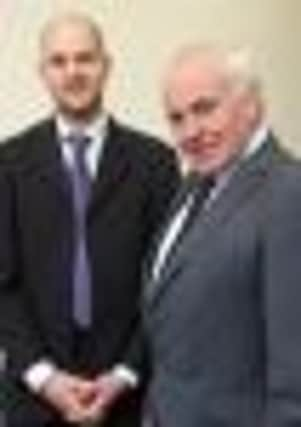‘Killing was a tragic and senseless loss’


Shane Mathers was barely two-years old when an IRA gunman shot his mother dead in Gobnascale almost exactly 31 years ago. Joanne Mathers was collecting census forms on April 7, 1981 at Anderson Crescent. As she chatted to a house holder a republican gunman ran towards her, snatched her clipboard from her hand, placed a handgun to her neck and fired. The murder came against against the backdrop of a republican campaign against the collection of census data because the IRA believed at the time that the security forces were using information on the forms as material for intelligence gathering.
After the gunman fired, Joanne Mathers screamed and ran past the home owner who then slammed a glass panelled door against him in an effort to prevent him following his victim. Undeterred, the IRA man smashed through the glass and as Joanne Mathers lay dying he picked up the census forms she had gathered and ran away from the house brandishing the murder weapon in the air to deter anyone from trying to prevent his escape.
Advertisement
Hide AdAdvertisement
Hide AdJoanne Mathers was a first class honours graduate from Queen’s University Belfast (QUB) in Town and Country Planning. She had chosen to relinquish a civil service career to work on her husband’s farm near Bready, raise her infant son and was collecting census forms to earn extra money. Shane Mathers later followed in his mother’s footsteps and now works in the Planning Department in Omagh having also qualified from QUB.
Despite a Historical Enquiries Team (HET) investigation into the murder which began last year after the Sentinel interviewed Joanne Mathers’ husband Lowry Mathers on the 30th anniversary of her death, no one has been brought to book for the killing.
Shane Mathers spoke to the Sentinel at Altnagelvin Hospital yesterday as a room opened in May, 1982 to the memory of his mother was rededicated having been shifted to the new South Wing. The room exists to provide overnight accommodation for the parents of sick children.
Asked if he has forgiven the perpetrators behind his mother’s murder, Shane Mathers said: “I really just want to concentrate on the event at hand and I don’t want to make any broader comment at this time.
Advertisement
Hide AdAdvertisement
Hide Ad“At the time my mother was killed there was a memorial fund set up by Mr Anderson and Mr McCauley who were the Census representatives in the area and also by Mrs Anne O’Neill who worked in the local planning office. There was quite a substantial amount of money collected - £13,000 which went towards a memorial room, the purposes of which would have been very close to my mother’s heart.”
Such was the widespread revulsion at the killing in 1981, both the IRA and INLA in the city almost immediately denied the attack. The ‘Derry Brigade’ of the IRA went to the extent of releasing a statement accusing anti-republican elements of “frantically trying” to discredit the election campaign of hunger striker Bobby Sands. But, RUC forensic evidence concluded that the gun used in the murder of Joanne Mathers had been used twice before in Provisional IRA ‘punishment attacks’ in the city.
Shane Mathers told the Sentinel: “I have no recollection of my mum, but I do remember the feeling of sadness at not having her and from what my father and my late granny told me I was conscious of the fact that she wasn’t there and would have asked for her.
“We would see the room in the hospital as an identifiable feature and hopefully it will allow my mother’s memory to live on. There is also an annual award made by the Royal Town Planning Institute which is another way in which her name lives on and is associated with affection.”
Advertisement
Hide AdAdvertisement
Hide AdIn an interview with the Sentinel a year ago, Shane’s father Lowry said: “Everytime I look at him (Shane) I see his mother. As far as I am concerned there was no justice for Shane. There are boys in Derry or Londonderry, whatever you want to call it who know who did this. Somebody ordered it to be done and the person who carried this out knows exactly what he did. The person who ordered this is every bit as guilty as the man who carried it out. For a long time when I went into town I looked at men passing me by and I wondered if I was looking at Joanne’s killers. I said to myself, is it him, is it him, or is it him?”